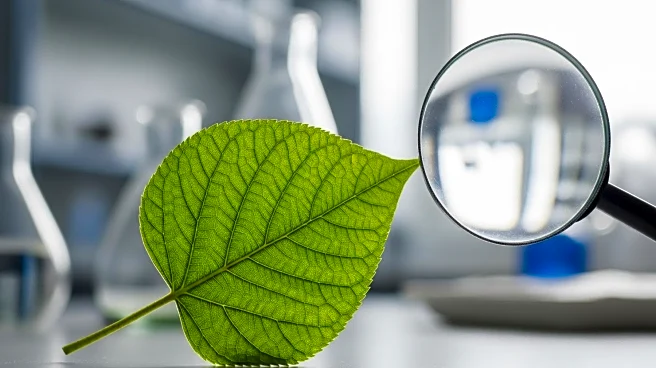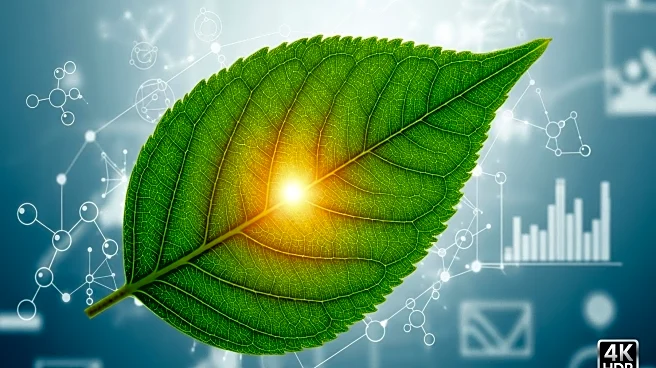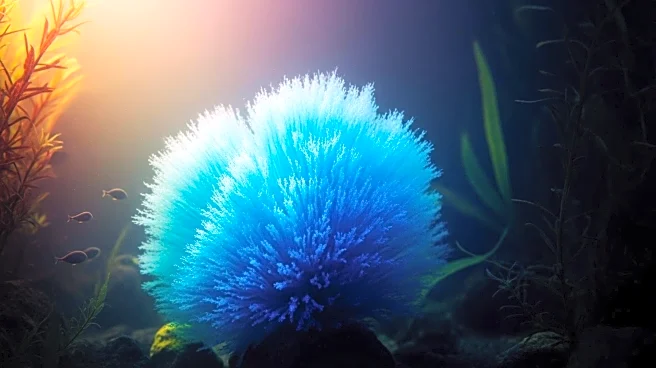What's Happening?
Scientists from the Indian Institute of Science (IISc) and the California Institute of Technology (Caltech) have resolved a decades-old puzzle about the initial moments of photosynthesis. Their research reveals why electron movements, crucial for energy transfer, occur through only one side of a key protein-pigment structure in Photosystem II (PSII). Despite structural symmetry between the D1 and D2 branches in PSII, only the D1 branch is functionally active due to a higher energy barrier in D2, making electron transport energetically unfavorable. This discovery was achieved through molecular dynamics simulations, quantum mechanical analyses, and Marcus theory.
Why It's Important?
Understanding the intricacies of photosynthesis is vital for developing efficient artificial systems that replicate nature's design, such as synthetic leaves and solar-based fuel technologies. By uncovering the asymmetry in electron flow within PSII, scientists can design artificial photosynthetic systems capable of converting solar energy into chemical fuels, contributing to sustainable renewable energy solutions. This research represents a significant step forward in understanding natural photosynthesis, potentially leading to innovative applications in energy production.
What's Next?
The findings may lead to the development of artificial photosynthetic systems that mimic natural processes, enhancing solar energy conversion efficiency. Researchers might explore ways to tweak components within PSII to boost or rewire electron flow, potentially overcoming existing barriers. Continued collaboration between institutions and further research into the protein environment around PSII could yield additional insights into optimizing photosynthesis for artificial applications.
Beyond the Headlines
The study highlights the importance of interdisciplinary approaches, combining theory and experimentation to solve complex scientific problems. The insights gained from this research could influence broader scientific fields, including quantum physics and molecular biology, by providing a deeper understanding of electron transfer processes. Ethical considerations regarding the manipulation of natural processes for artificial applications may arise, necessitating careful evaluation of potential impacts.











